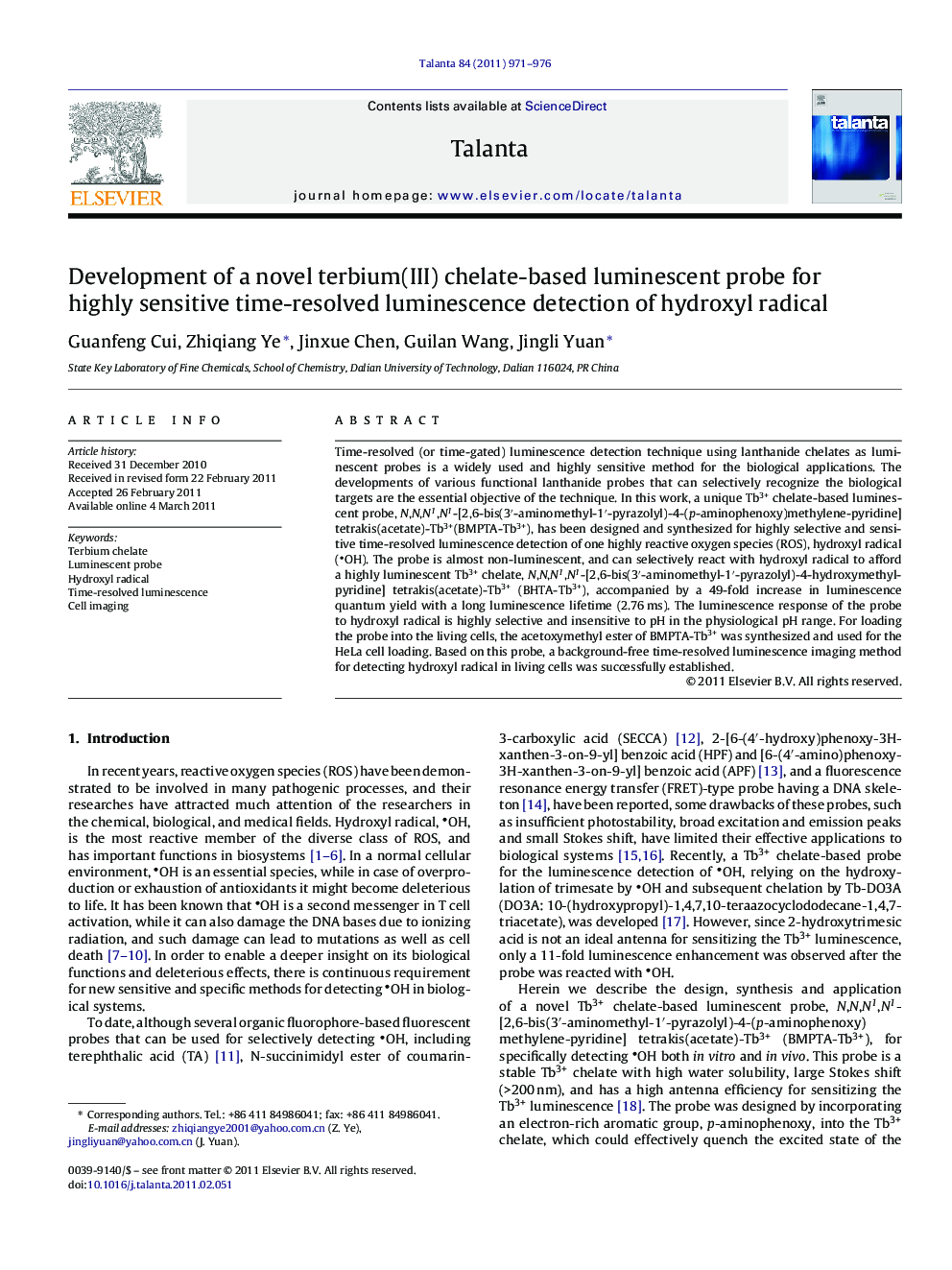| Article ID | Journal | Published Year | Pages | File Type |
|---|---|---|---|---|
| 1244199 | Talanta | 2011 | 6 Pages |
Time-resolved (or time-gated) luminescence detection technique using lanthanide chelates as luminescent probes is a widely used and highly sensitive method for the biological applications. The developments of various functional lanthanide probes that can selectively recognize the biological targets are the essential objective of the technique. In this work, a unique Tb3+ chelate-based luminescent probe, N,N,N1,N1-[2,6-bis(3′-aminomethyl-1′-pyrazolyl)-4-(p-aminophenoxy)methylene-pyridine] tetrakis(acetate)-Tb3+(BMPTA-Tb3+), has been designed and synthesized for highly selective and sensitive time-resolved luminescence detection of one highly reactive oxygen species (ROS), hydroxyl radical (OH). The probe is almost non-luminescent, and can selectively react with hydroxyl radical to afford a highly luminescent Tb3+ chelate, N,N,N1,N1-[2,6-bis(3′-aminomethyl-1′-pyrazolyl)-4-hydroxymethyl-pyridine] tetrakis(acetate)-Tb3+ (BHTA-Tb3+), accompanied by a 49-fold increase in luminescence quantum yield with a long luminescence lifetime (2.76 ms). The luminescence response of the probe to hydroxyl radical is highly selective and insensitive to pH in the physiological pH range. For loading the probe into the living cells, the acetoxymethyl ester of BMPTA-Tb3+ was synthesized and used for the HeLa cell loading. Based on this probe, a background-free time-resolved luminescence imaging method for detecting hydroxyl radical in living cells was successfully established.
